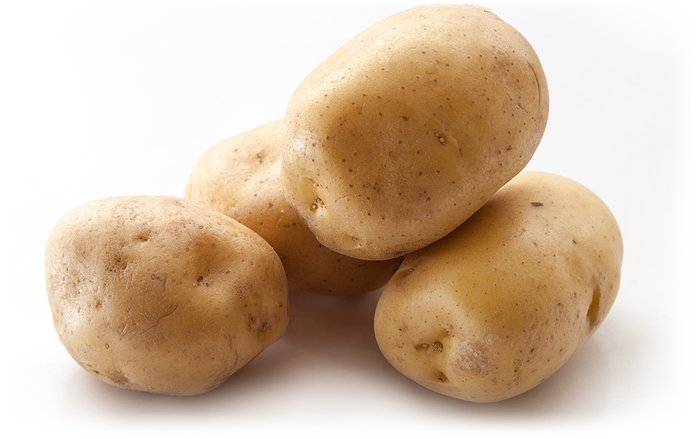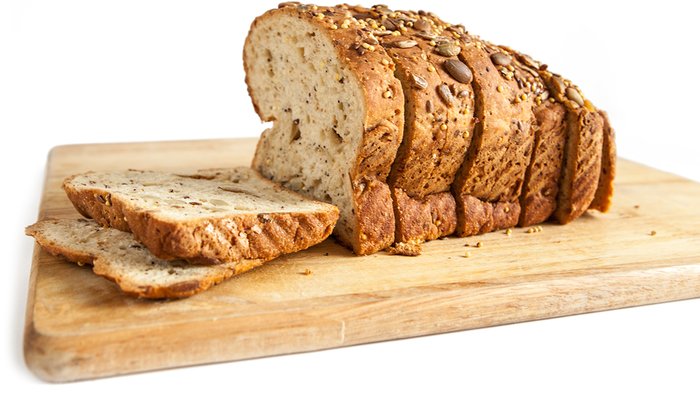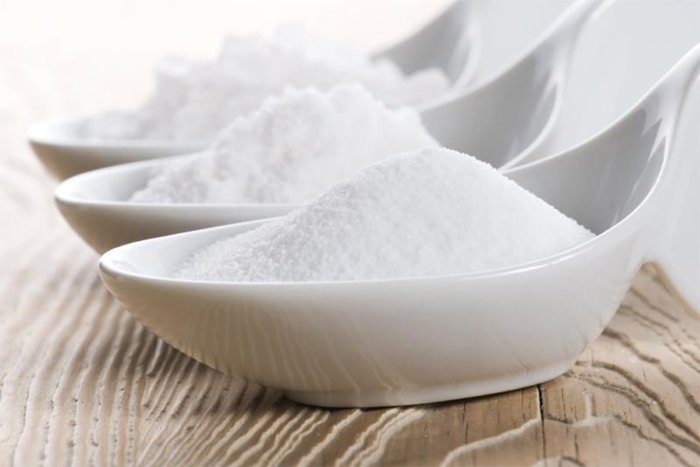You've probably come across articles and news reports that demonize specific foods, potentially making you think that your favorite snacks are actually nefarious villains wreaking havoc on your body. It may be hard not to believe some of these food-related horror stories, but don't go jailing everything in your cupboard just yet!
Particular foods are often accused of various crimes like "causing" obesity or cancer, or even deemed downright toxic, but the research often tells another story. Let's take an impartial look at the "evidence" mounted against seven wrongly convicted foods and put them back on the right side of the law!
1. White Potatoes
Why they were jailed: White potatoes have been villainized for their nutrient-poor flesh and frequent association with high-calorie foods like sour cream, bacon, butter, and cheese. It also doesn't help that their sweet cousin is already hanging with the "in" crowd of foods.
The truth: The white potato is a great source of carbohydrates! With a mere 160 calories per medium spud, it's hard to ignore this tasty treat.
This tater's sweeter cousin may grab all of the headlines, but white potatoes are rich in vitamin C, containing 70 percent of your daily requirements per medium spud. They're also an excellent source of vitamin B-6 and pack the same fibrous punch as the sweeter potato—about 5 grams each.

White potatoes boast an impressive nutrient profile. They're rich in vitamins c and b-6 and a are great source of fiber.
2. Coconut
Why it was jailed: This tropical nut was shunned because of its high fat content, specifically its saturated fat. A 3-ounce serving has approximately 30 grams of fat, and nearly 90 percent of that is saturated!
The truth: Saturated fat isn't the cardiovascular-disease-causing beast we once thought it was. Truth be told, you actually need some saturated fat in your diet, especially if you're an avid gym-goer.
However, the more important fats found in coconuts are known as medium-chain triglycerides (MCTs). Unlike typical, large-chain fats found in most foods, MCTs are rapidly digested and absorbed. This reduces the risk of storage and provides a readily available fuel source for both the brain and muscles.[1,2]
3. Popcorn
Why it was jailed: Popcorn is often associated with generous amounts of butter and portion sizes large enough to feed a family of 10. It doesn't help that the large popcorn at your local movie theater pushes 1,000 calories!
The truth: Popcorn, or rather corn itself, is actually a whole grain, meaning that it contains ample fiber that slows down the digestion process. In fact, a small 1-ounce serving has 4 grams of fiber! This same serving, which is roughly 3 cups popped, contains a mere 110 calories.
Rather than dousing your popcorn in butter, try relying on calorie-free herbs and spices, or using a quick spritz of low-calorie butter spray. For a sweet-tasting corn, try mixing cinnamon, vanilla extract, and a pinch of brown sugar atop your corn. For a savory treat, try adding salt, fresh-cut cilantro, and a squeeze of fresh lime juice.

Popcorn, or rather corn itself, is actually a whole grain, containing ample fiber that slows down the digestion process.
4. Coffee
Why it was jailed: Coffee itself may not have a horrible reputation, but many people hear the word and immediately associate it with the high-fat, high-sugar, high-calorie coffee-shop treats that often surpass 500 calories. Some folks also fear coffee's caffeine content.
The truth: Caffeine actually provides several cognitive and physical performance benefits, ranging from improved reaction time, alertness, and focus to a boost in effort, strength, and power.[3]
Aside from the caffeine, coffee itself is rich in antioxidants that provide numerous benefits. Consuming anywhere from 1-5 cups per day has been associated with increased longevity and overall well-being.
5. Gluten
Why it was jailed: A combination of worldwide awareness of celiac disease and anecdotal reports of gluten-induced digestive issues have placed gluten in a tough situation. Gluten is a protein common in wheat, barley, and rye. For those with a true gluten intolerance, also known as celiac disease, the body views gluten as a foreign invader and builds up a large amount of antibodies that actually attack the lining of your small intestine. This result is a combination of GI distress, nausea, vomiting, diarrhea, and cramps.
The truth: While anti-gluten dieting has become popular, it's estimated that around only one percent of the population has celiac disease.4 For the remaining 99 percent of the population, gluten does not pose a health risk. Anecdotal reports of "feeling better" when making the gluten-free switch are usually related to the elimination of junk food and highly processed food, which leads to a more nutritious dietary intake overall.
Rather than wasting money on overpriced, wheat-free bread and pasta, which are often loaded with saturated fat and simple sugars to compensate for taste, purchase wheat, barley, and rye without reservation.

For 99 percent of the population, gluten poses no health risk.
6. Sports Drinks
Why they were jailed: Known for significant amounts of sugar, artificial sweeteners, colorings, and dyes, it's no surprise sports drinks have been put in the dog house. It doesn't help that many people drink them like water throughout the day, which may end up overloading daily caloric intake.
The truth: Sports drinks commonly consist of sugar and electrolytes. When used appropriately, such as during exercise, sports drinks can support maximal performance.
Sugar—your muscles' primary energy source—provides a readily available fuel source to sustain high-intensity performance when consumed during training. Sports drinks also support hydration by supplying fluids, sodium, and potassium, the three major nutrients lost in sweat.
As for the safety of artificial sweeteners, most research shows they pose no health risk when consumed in moderation. In the case of colorings and dyes, it seems many companies are trending away from formulating with artificial additives.
It's important to know there is a time and place for sports drinks. When performing a light exercise session lasting fewer than 45 minutes, water is sufficient. If you're a heavy sweater (think high humidity), consider a low-calorie sports drink that provides less sugar but ample electrolytes. For exercise lasting longer than 45 minutes, a sports drink may be beneficial.
7. Sodium
Why it was jailed: Supposedly linked to increased blood pressure and hypertension, sodium has been spurned for a long time. The government even went so far as to establish a daily limit of 2,000 milligrams per day, suggesting you kiss frozen foods, chips, and deli meat good-bye.
The truth: Sodium is an essential nutrient. If you don't have a history of high blood pressure or an existing medical condition, there's no reason to restrict sodium intake. Your kidneys are perfectly capable of handling the ebb and flow of your sodium intake, so don't sweat the supposed limits.
If you're an avid exerciser, you definitely want to add a pinch of salt to foods or choose sodium-rich snacks throughout the day to compensate for sodium lost through sweat. Salty options include beef jerky, deli meat, dairy, crackers, soup, and canned vegetables.

Sodium is an essential nutrient. If you don't have a history of high blood pressure or an existing medical condition, there's no reason to restrict sodium intake.
REFERENCES
- Nagao, K., & Yanagita, T. (2010). Medium-chain fatty acids: functional lipids for the prevention and treatment of the metabolic syndrome. Pharmacological Research, 61(3), 208-212.
- Horowitz, J. F., & Klein, S. (2000). Lipid metabolism during endurance exercise. The American Journal of Clinical Nutrition, 72(2), 558s-563s.
- Warren, G. L., Park, N. D., Maresca, R. D., McKibans, K. I., & Millard-Stafford, M. L. (2010). Effect of caffeine ingestion on muscular strength and endurance: a meta-analysis. Medicine and Science in Sports and Exercise, 42(7), 1375-87.
- Celiac Disease: Fast Facts. (n.d.). Retrieved from http://www.celiaccentral.org/celiac-disease/facts-and-figures/

